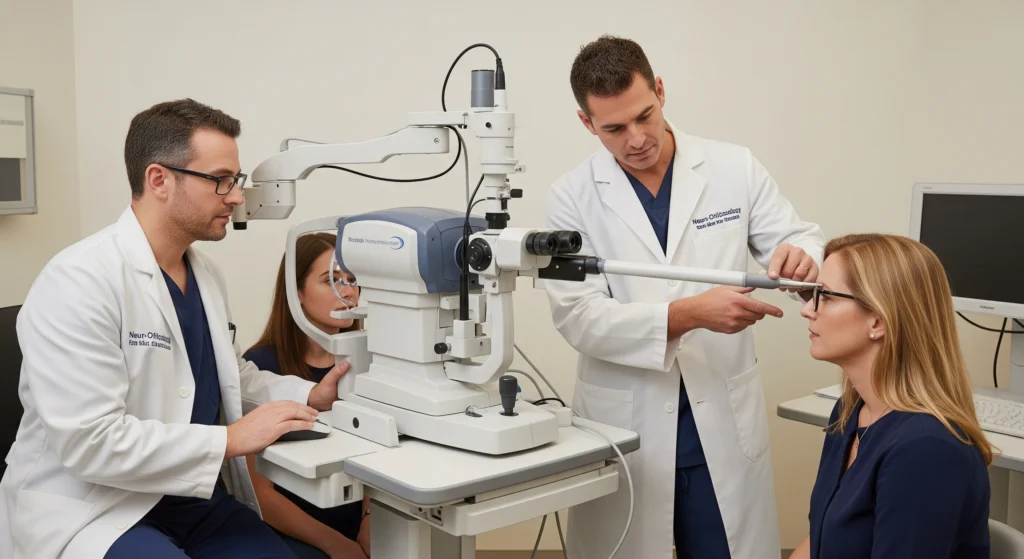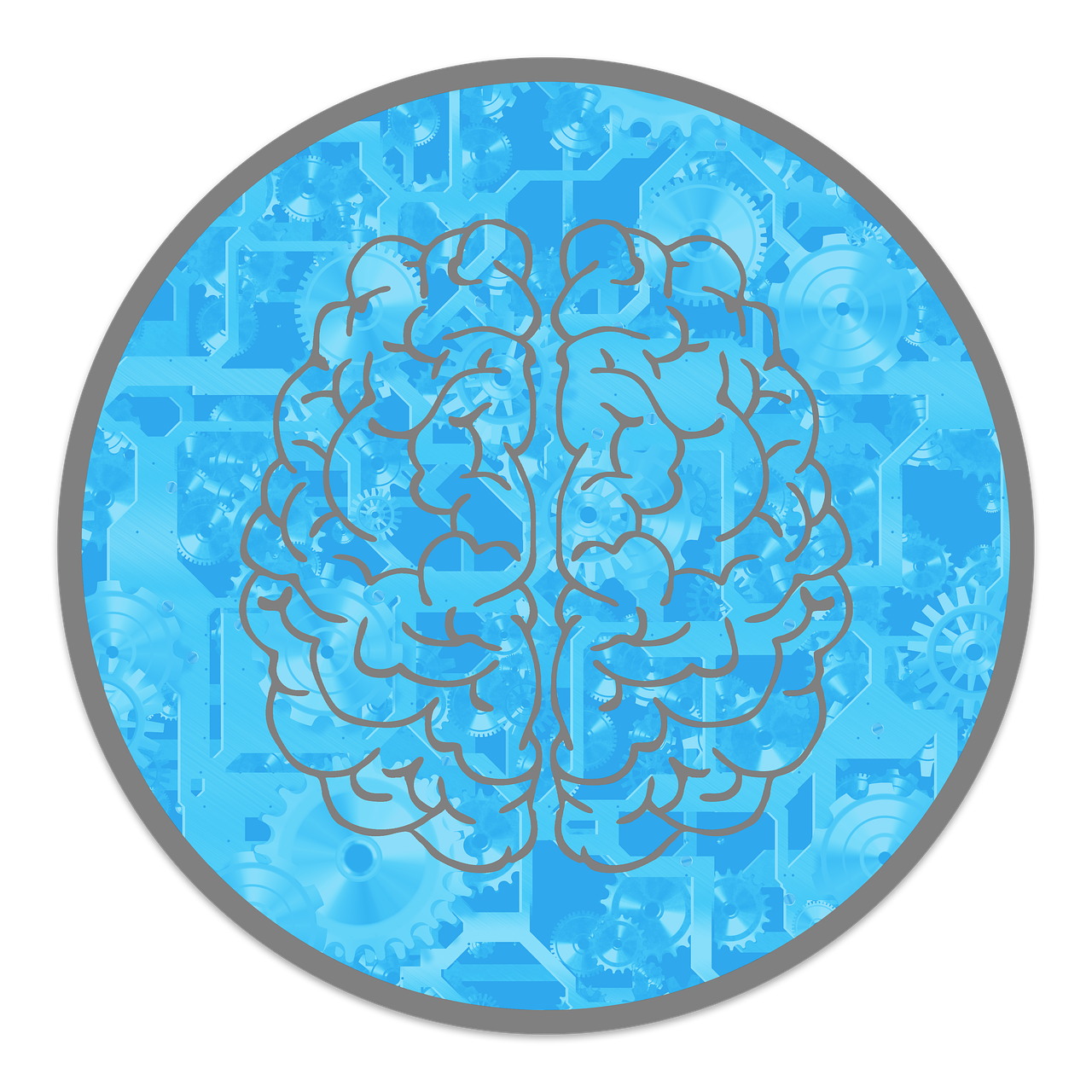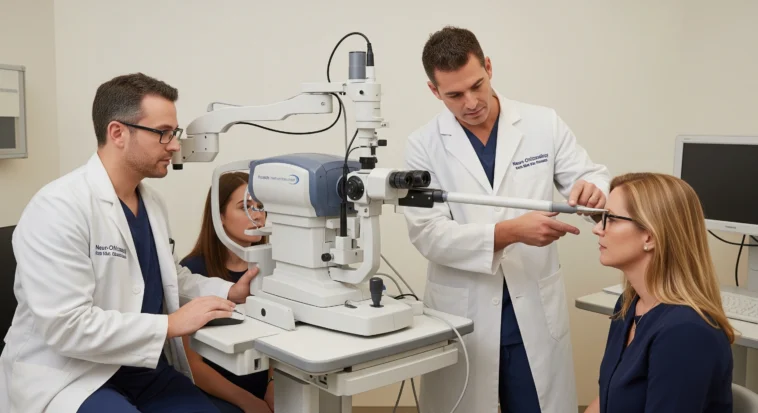
Neuro-ophthalmology is the specialist part of medicine that sits right between the brain and the eye — think of it as the troubleshooting team for anything that makes your vision act weird because of your nervous system.
Doctors in this field use advanced tests and treatments to catch problems early and, often, stop permanent vision loss.
Imagine a teenager who woke up with double vision and, with the right neuro-ophthalmology care, avoided long-term damage — that’s the kind of difference prompt, expert care can make.
If your eyes ever feel “off,” this is the team you’d want on your side.
Understanding Neuro-Ophthalmology: Where Vision Meets Neurology
Neuro-ophthalmology is the detective work that connects your eyes to your brain — it treats vision problems caused by nerves and the brain, not by the eye itself.
Think optic nerve issues, brain-related vision loss, and weird eye movements — stuff regular eye doctors don’t always see.
In the past decade the field has exploded: tests and treatments now fix or slow things we once only diagnosed.
Picture a teen who suddenly sees double — with the right neural tests and care, long-term damage can be stopped.
If your vision feels “off,” this is the specialty that figures out why and fights to save it.
Common Neuro-Ophthalmic Conditions Requiring Treatment
Optic Neuritis
This is when the optic nerve (the “cable” from your eye to your brain) gets inflamed.
It can suddenly blur or even steal your vision, sometimes with eye pain or colors looking “off.”
It’s often linked to multiple sclerosis, so catching it early is huge.
Papilledema
Here the optic nerve swells because of too much pressure in the brain.
It’s a big red flag for serious issues like brain tumors or infections.
Both eyes usually swell, which helps doctors spot it. Treating it fast can literally save both life and sight.
Myasthenia Gravis
This autoimmune condition makes the muscles weak — and in the eyes, that means droopy lids and double vision.
Sometimes the eye signs show up before the rest of the disease, which is why an eye exam can actually be the first clue.
Idiopathic Intracranial Hypertension (IIH)
Mostly seen in young women, this condition causes brain pressure to rise without a clear cause.
It looks like a brain tumor but isn’t — that’s why it used to be called “pseudotumor.” If untreated, it can quietly rob vision.
Cranial Nerve Palsies
hese are like nerve “short circuits” that mess with eye movement.
Depending on which nerve is hit, the eye can’t move in certain directions, often causing double vision.
Doctors play detective here to find out what’s behind it — from diabetes to trauma.
Advanced Diagnostic Techniques in Modern Neuro-Ophthalmology
Optical Coherence Tomography (OCT)
Think of OCT like an “HD scan” of the back of your eye.
It’s painless, super quick, and shows layers of the retina and optic nerve in crazy detail.
Doctors can spot tiny nerve changes before you even notice vision loss. I once had a patient who thought their eyes were fine — OCT revealed early damage we treated right away.
Visual Field Testing
This test maps out what you can and can’t see — kind of like checking for blind spots in your vision.
The machine flashes lights in different spots, and you just press a button.
It’s simple but powerful: it can reveal brain or nerve problems before they get worse.
Neuroimaging Integration
MRIs and CT scans let doctors peek inside the brain to see what’s messing with your vision — tumors, swelling, or blood vessel issues.
It’s like detective work with high-tech cameras, and often it’s what helps solve the “mystery” when symptoms don’t add up.
Contemporary Treatment Approaches
Immunosuppressive Therapies
For conditions like optic neuritis (often tied to multiple sclerosis), modern meds don’t just calm flare-ups — they can actually slow the disease down.
Steroids are still the go-to for sudden inflammation; I’ve seen patients go from barely seeing shapes to reading again within days of treatment.
Newer drugs like rituximab and mycophenolate give options when standard ones don’t cut it.
Targeted Medical Management
Idiopathic Intracranial Hypertension (IIH)
First-line care is usually meds like acetazolamide, which lower brain fluid pressure.
Add in weight loss and diet tweaks, and symptoms often improve dramatically.
Myasthenia Gravis
Here, meds help nerves talk to muscles better — pyridostigmine is one of the most common.
If things flare badly, treatments like IV immunoglobulin can stabilize patients fast.
Surgical Interventions
When meds aren’t enough, surgery steps in.
For papilledema, doctors sometimes cut tiny “windows” in the optic nerve sheath to relieve pressure — I’ve seen it save patients from blindness.
In stubborn IIH, shunts help drain excess brain fluid. Eye muscle surgery can also fix double vision and get people seeing clearly again.
Emerging Therapies and Clinical Trials
The future is exciting:
- Neuroprotective agents are in testing to shield optic nerves from further harm.
- Stem cells could one day regrow damaged nerve tissue.
- Gene therapy is showing promise for inherited eye diseases once thought untreatable.
Multidisciplinary Care Approach
Collaborative Team Structure
Treating neuro-ophthalmic conditions isn’t a one-doctor job — it’s teamwork.
The neuro-ophthalmologist is like the team captain, pulling everything together.
Neurologists handle the brain side of things, neurosurgeons jump in if surgery’s needed, endocrinologists step in if hormones or metabolism play a role, and rehab specialists help patients adjust when vision changes stick around.
Patient Education and Support
Here’s the secret: the patient is also part of the team.
You’ve got to know why taking meds on time matters, how to spot warning signs before things get worse, and even how small changes — like diet or sleep habits — can improve outcomes.
And you’re never alone: support groups and advocacy networks exist to guide you.
Monitoring and Long-term Management
Regular Assessment Protocols
Ongoing monitoring keeps treatment working and the disease stable:
- Visual function testing at regular intervals — think of it like periodical checkups for your sight.
- Imaging studies to assess structural changes — MRIs or OCTs let doctors see what your nerves are doing inside.
- Medication monitoring for side effects and efficacy — pills help, but we check they actually help you and aren’t causing trouble.
- Quality of life assessments to guide treatment decisions — doctors ask how your day-to-day life is going so treatments actually fit your life, not just the scan results.
Adaptive Strategies
When vision loss is permanent, rehab helps you live fully:
- Low vision aids and assistive technology — magnifiers, apps, and gadgets that make reading and screen time easier.
- Orientation and mobility training — learn safe ways to move around so you stay independent.
- Occupational therapy for daily living adaptations — small tricks to do big things: cooking, studying, and gaming with less stress.
- Psychological support for adjustment to vision changes — losing sight can be scary; talking to someone helps, and I’ve seen teens find new confidence with the right support.
Future Directions in Neuro-Ophthalmology Treatment
Precision Medicine Approaches
The future is all about personalized care.
With genetic testing and biomarkers, doctors can figure out exactly what’s happening in your body and design treatments that fit you, not just the average patient.
Artificial Intelligence Integration
AI is like giving doctors a superpower.
These tools can spot tiny changes in scans that the human eye might miss, meaning problems get caught earlier and treated faster.
Imagine your computer pointing out a glitch in your vision test before you even notice — that’s already happening in clinics.
Telemedicine Applications
Not everyone lives near a neuro-ophthalmologist, and traveling can be tough.
Telemedicine is changing that — patients can now connect with specialists from their living rooms.
I’ve had a teenager from a small town do a full consult on video, saving hours of travel and still getting the care they needed.
It’s like bringing world-class medicine straight to your doorstep.
Conclusion: A Bright Future for Vision Preservation
Neuro-ophthalmology has grown from mostly “watch and wait” into a field full of powerful treatments.
With sharp new scans, targeted meds, and teams of specialists working together, patients today have more hope than ever.
If vision suddenly changes — especially with weird brain-related symptoms — seeing a neuro-ophthalmologist is the smartest move.
Today’s tools can not only diagnose fast but also protect vision and independence.
And with research racing ahead — from AI to gene therapy — the future looks even brighter.
This field isn’t just saving sight; it’s changing lives.



